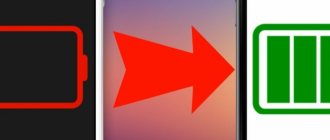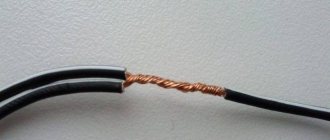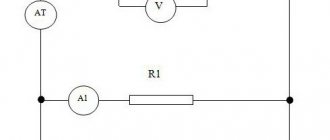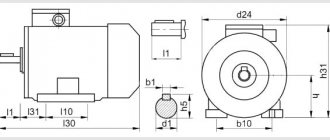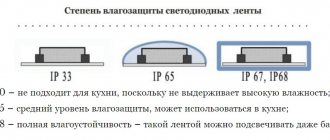Charger (CH) - transfers energy to gadget batteries from external sources and thereby ensures long-term and uninterrupted operation of phones, tablets, laptops, e-readers, mp3 players and other equipment.
All gadgets are usually equipped with “native” memory. However, during operation the need for additional memory arises. Another factor in favor of such devices is the fact that most modern devices do not require replacing one battery with another (with the exception of cameras).
- Network storage
- Wireless storage
- Car storage
Directions
2 2
3 3
The phone is not charging. What to do?
Ingredients Directions
[adace-ad id=”5714"]
A fairly typical scenario, which, however, almost always takes users by surprise. People rarely prepare for this, and this is where ignorance arises: the phone does not charge well, although charging is in progress, or does not respond at all to connecting the power adapter and is in no hurry to accumulate charge. This story is often found on Xiaomi and Samsung models. And LG, Huawei and Honor also suffer from this. In general, get ready for a long read.
Output connection
1x USB Type-C / 2x USB Type-C – a smaller version of the USB connector. It features a double-sided design, which allows you to connect the cable to the device the first time.
microUSB – often found in portable technology.
Lighting – used in Apple products (iPad, iPod touch, iPhone). Not applicable by other manufacturers. A similar connector is found in some universal chargers.
Proprietary connector - developed by a specific manufacturer exclusively for its products. You cannot connect a gadget from another manufacturer to this connector.
A little theory
How does a charger charge a phone?
[a[adace-ad id=»5226"]r> To understand why charging does not charge the phone well, you need to understand how this even happens? Actually, the charging process occurs in two stages. The first stage is charging with direct current to a certain voltage ( as a rule, this is 4.2V) The second stage begins when the constant current charge has charged the phone ~85% - this is a charge with a smoothly falling current (the voltage remains at 4.2V) until the current drops to about 3% of the original ( 15 -30 mA). The charger must supply ~ 400-500 mAh to the device at the time of charging. This whole process is controlled by a charge controller located in your phone. Many modern phones have a voltage already in the region of 4.35-4.4V (v fully charged battery state)
How does your phone drain?
The phone “understands” that the battery is low if the voltage on the battery, measured directly, reaches a certain lower threshold of ~3.5V-3.6V. This situation means that the percentage of charge that we see on the screen and calculated by the operating system algorithms reaches zero. You need to understand that the percentage given by the phone (especially with regard to the Android OS) for the discharge state is approximate, because the system can only know exactly the current voltage and, at best, know a more or less correct approximate value of the capacity that is hardwired into the battery controller.
The shutdown command is usually given by the driver, and it is guided not by the voltage, but by the value of the residual charge calculated or received from the battery controller. In order for the 0% value to correspond to the actual minimum voltage, periodic calibration is required. This is why sometimes a situation arises where the first 50% of the charge lasts much longer than the second 50%.
How long does it take to charge the phone? About voltage and current
The main parameter of a phone battery is voltage. Everything else is derived from it. At the beginning of the article, we examined the nuance of charging a phone: the battery should not be charged to a voltage higher than 4.2V and discharged below 3.4 - 3.6V. A higher voltage destroys the battery; the lower threshold is determined by the communicator manufacturer to ensure normal operation and shutdown of the device at this voltage and to prevent excessive discharge when left in the off state for a long time.
There is no point in discharging below the minimum voltage of 3.4 -3.6V - the voltage drops very sharply with discharge, there will be practically no gain in phone operating time.
The Android operating system calculates traffic consumption based on the so-called Power Profile, which is provided by each manufacturer. You can read it in English here - https://source.android.com/devices/tech/power/. The main part of the Power Profile is a set of values, expressed in milliamps, that determine the battery consumption of each device component: https://source.android...ices/tech/power/values. Pay attention to the table at the last link. It indicates the main sources of current consumption in the operating system. For example:
wifi.active=31mA additional consumption in milliamps caused by data transfer over Wi-Fi. radio.active=100-300mA additional consumption in milliamps caused by data transmission over the mobile network. cpu.active=100-200mA additional consumption in milliamps caused by CPU operation
Peculiarities
GaN charging is a charger based on gallium nitride (GaN). Compared to a classic charger, it charges faster and takes up less space, which is important when traveling. Compatible with all devices equipped with a USB Type-C port.
Operation indicator – informs about the operation of the charger. Allows you to evaluate whether the device is working correctly. Some devices are equipped with an indicator that displays information about failures and operating modes of the memory.
Apple MFI certification – certifies that third-party products for Apple gadgets comply with the technical standards of this company. Guarantees perfect compatibility of these accessories with iPhone/iPod/iPad.
Charger Tester
Link to Google Play
A simple and intuitive application for checking the charger. It will help answer the questions: How does voltage change? What current does charging provide? It is better to measure the maximum current on a 10-20% discharged device. It is necessary to compare the charger and cords almost at the same time (the battery discharge should be the same +/- a couple of percent), this is all for the purity of the experiment. Charger Tester essentially determines how much current is drawn from your device when it is charging.
Compatibility
This parameter is used to evaluate whether the charger is suitable for a particular gadget. Chargers are divided into two categories.
- Branded – chargers with proprietary connectors that guarantee full compatibility of the two devices. Manufactured by manufacturers of portable equipment, for example, Apple, Nokia, Sony Ericsson. There are chargers from third-party manufacturers that are also suitable for gadgets of a particular brand. Branded chargers are rare.
- Universal – compatible with the vast majority of portable equipment from different brands through the use of standard USB connectors.
Wakelock Detector
Link to Google Play (full version, paid)
Free lite version
One of the common reasons for severe battery drain on Android is that some programs do not allow the phone to go into standby/sleep mode. Wakelock Detector shows information about the processes that wake the device from sleep mode and does not have any background activity and does not eat the battery, since it only uses OS statistics. Once you launch the application, you will be surprised how many applications run “idle”, preventing your device from falling asleep.
When we launch the program, we are taken to the main tab, which is a list of programs that often or not often wake up your smartphone.
On the top panel on the left is a program icon in the form of a battery with the head of the famous Android, a little to the right are icons for selecting preferences. The very first icon (it changes depending on the selected sorting of programs and processes) opens us a menu in which you can select criteria for sorting the list of programs below.
Design
MagSafe – charging for Apple gadgets. It is made in the form of a magnetic disk that is fixed on the back of the iPhone. Allows you to comfortably use the device while charging, including playing games.
Charging 1 smartphone – designed to charge one gadget (smartphone, less often a tablet). Some models can simultaneously charge a smartphone and a smartwatch.
Charging 2 smartphones – designed to charge two gadgets. Some devices are capable of charging 2 smartphones and a smartwatch. Compared to storage for one gadget, these models take up more space and are more expensive.
Headphone charging area – a special area for wireless charging of headphones.
Smartwatch charging area – a special design for wireless charging of smartwatches and other wrist devices.
Battery Saver
This application allows you to disable data transfer when the screen is off, and can only turn it on every 20 minutes - to check messages in instant messengers or mail. You can also disable the transmission of geodata, various manipulations with gestures (force the sensors to work constantly), leaving only the answer by shaking the phone. It can work according to a schedule - turn off at midnight, turn on in the morning. Battery consumption during active use may be only half (50%) of the charge. This is quite a small consumption for a day of vigorous use - Android users certainly know.
What charging speed should I expect from the charging cable?
Charging cables are not all equal in their capabilities. In terms of charging speed, it is best to focus on the adapter's performance. Factory specifications are printed on it in small print.
The main indicator is output power. In the example it is 1000 mAh. Thus, through this adapter, the phone’s charge will be replenished at a speed of 1000 mAh minus the current energy consumption.
For our test, we took the Samsung Galaxy A51, the official charging adapter for it with the accelerated power delivery function, and a USB-C cable.
Please note: Your smartphone and charging accessories will vary in specifications.
If you find that your phone is receiving less current than the adapter supplies, don't worry: there are ways to safely speed up charging.
Why check your phone battery?
The battery “ages” over time, which is accompanied by a decrease in performance. The more often it is charged and discharged, the faster it wears out. What accelerates wear:
- increased load. The Android system, for example, is not as optimized as iOS; it has many background applications that consume battery. And the user himself launches games, watches videos in high quality - all this requires energy, which is provided by the battery;
- viruses. They are able to load the system to the maximum, causing the processor to work at full capacity, heating the phone body. And high temperatures are contraindicated for any power sources;
- background applications. The user may not even be aware of them, but they work and waste energy;
- brightness to maximum. Previously, there were mobile phones with simple screens. Today's OLED displays deliver the most accurate and richest images possible, but at the cost of increased power consumption.
Usually you want to check your phone's battery when it starts to hold a charge worse. This means its service life is nearing the end. There are several ways to assess wear, one of which is using a multimeter.
Charging smartphones: history, facts, myths
Today, the average smartphone flaunts fantastic capabilities.
There is only one thing that upsets me - the battery, which is barely enough for a day of active work! In this post, we'll talk about how and why power supplies in mobile phones have evolved and what fast battery charging technologies are. And at the same time, we’ll dispel a few long-standing myths about the “correct” handling of batteries. Hello, Habr! We are Anker, and this is our first, but not the last post on the habrablog. In case anyone doesn't already know, Anker is the world's largest manufacturer of retail mobile chargers, founded by former Google engineer Stephen Young. However, our portfolio is not limited to chargers alone. The Anker brand produces a variety of USB cables and power banks, headphones and portable speakers, USB hubs, docking stations and even robotic vacuum cleaners! Moreover, all these are our own developments. We do not relabel other people's products. Anker has hundreds of engineers dedicated to the actual research, development and testing of new products. In this blog, we will talk about technologies through the prism of our specialization, sharing knowledge and insights from the international Anker team. We guarantee that you will not find any intrusive advertising or marketing statements here. And right now we’ll take a short excursion into the history of charging mobile phones (our favorite topic). How the first mobile phones were charged, how fast charging technologies work and why it’s time to forget myths about batteries - we’ll tell you here and now.
The history of telephone batteries begins in the distant 1940s, when police cars in St. Louis, PC. Missouri, cordless telephones appeared. They were powered by a car battery, one full charge of which was enough for about six short calls. The car battery was being charged with the car engine turned on. For several decades, mobile phones remained an expensive accessory for premium business-class cars - the electronics of that era were so demanding of current that none of the compact batteries could power it.
The first car radiotelephone, produced in 1946. On the one hand, advanced wireless technologies. On the other hand, rotary dialing. Source: / Wikipedia
This continued until 1973, when the first truly portable Motorola cell phone appeared, which later received the name DynaTAC 8000X (it went on sale only in 1983). The phone was content with a six-cell nickel-cadmium battery with a total capacity of 500 mAh. One charge was enough for 30-40 minutes of conversation (depending on the strength of the signal from the base station).
The charger for the DynaTAC 8000X had a trickle charging function - this is feeding an already charged battery with low currents to compensate for its self-discharge, which is a big problem with nickel-cadmium batteries. It took 10 hours to restore the phone's charge from zero. For the most hasty businessmen, Motorola offered a special fast charger - a docking station weighing 2 kg, which could charge the DynaTAC 8000X battery in just an hour! At the same time, the phone almost did not heat up, and the battery did not degrade. In fact, fast charging of phones did not appear “yesterday”, but 37 years ago.
Motorola's first DynaTAC 8000X portable phone and its optional 2kg fast charger. Source: / Wikipedia, Redfield-1982 / DeviantArt
While mobile phones were mastering new compact nickel-metal hydride batteries in the first half of the 1990s, a real revolution quietly took place in the battery market: in 1991, Sony released the first lithium-ion battery, which came complete with a film video camera CCD-TR1. Lithium-ion batteries were superior to their predecessors in terms of lifespan and energy density. In addition, they did not have a “memory effect”, which finally gave buyers of portable electronics the opportunity to charge their equipment in a new way - without waiting for the battery to be completely discharged and without charging it to the end.
With the advent of lithium-ion batteries, the standby time of phones has increased to days and even weeks versus one or two days previously. The era of “gluttonous” pocket personal computers (PDAs), and especially smartphones, had not yet arrived, so recharging the phone once a week was commonplace - there was simply no need for “fast” charging. But progress did not stand still, and at the end of the 1990s, lithium-polymer batteries went on sale. The first phone with a lithium polymer battery was the legendary Ericsson T28 released in 1999.
Ericsson T28 impressed with its “thinness” - only 15.2 mm in thickness, which was very small at that time. We had a new lithium-polymer battery to thank for this. Source: / Wikipedia
This was not a new type of battery, but only a small upgrade of lithium-ion cells: the liquid electrolyte in them was replaced with a solid or gel-like one, which increased the energy density. But increased energy density made it possible to make thinner batteries with the same capacity. Or more capacious ones in the same sizes. The battery capacity has increased noticeably, but their charging speed has not changed. Most often, smartphones came with the cheapest chargers with an output power of about 5 W, which required up to three hours to replenish the charge of a capacious battery. Even if users bought adapters with a power of 10 W, the power controller of smartphones did not always agree to supply such power to the battery, remaining true to the safe 5 V / 1 A profile. The need to charge a smartphone for an agonizingly long few hours forced the gears of progress to move - in early 2010- In the 1990s, mobile device manufacturers were actively looking for ways to quickly recharge batteries. And yet they found it.
At the end of the twentieth century, it took an average of one and a half to two hours to charge a phone, but mobile phones worked on a single charge for several days. A smartphone with a huge battery capacity of 2000 mAh for the early 2010s could be run down in less than a day - thanks to demanding games, streaming video and fast mobile Internet.
The so-called “slow” charging via USB according to the USB Battery Charging standard allows the charger current to increase to 2 A at a voltage of 5 V, but even two hours to recharge a large smartphone is too long.
Perhaps the most famous power supply for smartphones is the 5-watt charger that comes with the iPhone.
Due to its low power and resulting uselessness, the charger eventually became classified as “electronic waste.” As a result, Apple removed it from the iPhone and Apple Watch. Source: Apple In 2012, the USB Power Delivery standard was adopted, which regulated the transmission of voltages up to 20 V and currents up to 5 A through the USB interface. However, high powers require high-quality certified cables. Based on the Power Delivery specifications, chip manufacturers began to develop their own solutions for fast charging of smartphones. The first to do this was the telecommunications giant Qualcomm, whose Quick Charge 2.0 protocol became an improved version of Power Delivery - unlike its parent standard, Quick Charge 2.0 worked with any Micro-USB 2.0 cables and connectors.
The principle of operation of Quick Charge 2.0 was to gradually supply the battery with increased voltage up to 12 V at a constant current until approximately half of the battery is charged. After this, the voltage drops and the charging speed decreases, which reduces overheating of the smartphone and the battery along with it.
Now the fifth version of Quick Charge is relevant: Qualcomm promises to charge the smartphone up to 50% in 5 minutes and up to 100% in 15 minutes. This is because Quick Charge 5.0 provides for the transfer of power to the smartphone up to 100 W. Moreover, without overheating the battery - the smartphone will warm up no higher than 40 °C.
Qualcomm Quick Charge is a closed, licensed standard. It is supported only by Qualcomm Snapdragon systems-on-a-chip, which, however, powers about 40% of modern Android smartphones. Also, Quick Charge must be supported by the charger. Adding Quick Charge to the power supply has a very small effect on its price. Power supplies with this technology are necessarily marked with a lightning bolt logo, and the charging port itself is highlighted in color.
In Anker PowerPort Speed 5, two connectors support Qualcomm Quick Charge - they are highlighted in blue and accompanied by the technology logo (on the other side of the charger).
Source: Anker Based on Quick Charge, other companies have developed their own, but fully compatible fast charging technologies: Motorola TurboPower, Xiaomi Mi Fast Charging, Samsung Adaptive Fast Charging, Asus BoostMaster and Vivo Dual-Engine Fast Charging. In fact, they are no different from Quick Charge except for names, and therefore work perfectly in tandem with power supplies that support Quick Charge.
In contrast to charging with increased voltage, another approach has earned the right to life - charging batteries with increased currents at a normal voltage of 5 V. For example, the Chinese BBK Electronics, which owns the OPPO brand, followed this path.
VOOC (Voltage Open Loop Multi-step Constant-Current Charging) technology supplies the smartphone with a standard USB voltage of 5 V, but with a current of at least 4.0 A. The third version of VOOC brought support for currents up to 5.0 A, and the fourth version - up to 6.0 A. VOOC under other names came to smartphones of other BBK Electronics brands: OnePlus Dash Charge, Vivo Super FlashCharge and Realme Dart Charge. Small 5 W chargers that come with the iPhone are often not even removed from the box as unnecessary.
The Anker PowerPort III Nano, with similar dimensions, charges the iPhone with a maximum power of 18 W. Source: Anker VOOC and its analogues work in conjunction with special batteries, divided into sectors. A battery supporting this technology has eight contact pads, through which several sectors of one battery are charged in parallel.
Since the charging voltage through VOOC is standard, the phone does not need to reduce it to supply it to the battery, which means the controller will not lower it, generating heat harmful to the battery. That is, from a battery health perspective, VOOC is safer than Quick Charge. Another advantage was that when using the smartphone while charging via VOOC, it does not overheat. But it is better not to use devices with Quick Charge up to version 5.0 while charging, otherwise the smartphones begin to heat up and the power controller, for safety reasons, reduces the voltage and slows down charging.
VOOC looked too good until the user learned that the technology requires a special cable with thicker cores to carry high currents and an additional signal pin on the connector.
For the OPPO VOOC fast charging technology and its analogs to work, you need such a non-standard cable. Cables with a USB-C plug instead of Micro-USB 2.0 also have an additional pin. Source: AliExpress
As you understand, included chargers for smartphones always support one fast charging technology (well, and its “copies”). If you are the lucky owner of gadgets from different companies, for example, Apple iPad Pro with Power Delivery, Samsung GALAXY S9 with Adaptive Fast Charging, then charging from one gadget will charge another gadget in slow mode.
For a “zoo” of devices from different brands, it is useful to buy one universal adapter with several outputs for simultaneous charging of all gadgets - such that the charger understands which fast charging standard the connected gadget works with and starts charging according to this standard.
Here's a reminder for you.
This table contains the specifications of the most popular smartphone fast charging technologies in comparison with all USB versions. Source: Anker In all Anker chargers, Anker PowerIQ technology is responsible for this. For example, the Anker PowerPort Atom III has USB-C and USB-A outputs, each marked with PowerIQ 3.0 and PowerIQ 2.0, respectively. You can connect smartphones, tablets and even laptops with support for USB Power Delivery, Qualcomm Quick Charge and their analogues to these outputs - in all cases the adapter will select the maximum allowable power mode, be it 5 V / 2.4 A, 9 V / 2 A or even 12 V / 1.5 A.
Anker Powerport III Nano 20W can become an indispensable assistant in this case. This is the thinnest and lightest charger in the Anker line. The new product will fit almost any Apple and Android device and eliminate the need to have a personal memory for each gadget. It features one single USB-C port that can deliver up to 20W of power using the Power Delivery standard. Anker Innovations engineers fit 20W into an adapter measuring 2.74 x 3.00 cm, which is comparable to the size of a 5 ruble coin.
Each Anker charger with PowerIQ technology contains a chip that communicates with the connected gadget and selects the most efficient power protocol for it. For example, PowerIQ 3.0 works with Power Delivery, Quick Charge and Apple Fast Charging. When a smartphone is connected, the PowerIQ chip sends commands that offer the smartphone one by one supported power protocols. If the smartphone responds that it can work with Power Delivery or Quick Charge, the Anker charger transmits data about the supported output voltage and current. The smartphone will select the optimal power mode from those offered and send a command about it to the charger. After this, the Anker charger will regulate the voltage in accordance with the selected profile, and the smartphone will consume current in accordance with the protocol.
Anker PowerPort Atom III can charge either a smartphone or a laptop, and at the highest possible speed.
The USB-C output supplies 45 W, and the USB-A output supplies 15 W, simultaneously. Source: Anker Smartphone users are still arguing on the Internet about the dangers of fast charging for batteries. Some argue that any deviation from the years-proven combination of 5 V / 2 A (10 W) harms the battery, others cite the results of studies proving that supplying the phone with even 30 W of power, if it affects the health of the battery, is extremely insignificant . We will now mercilessly destroy this and several other myths about charging batteries.
Of course, high charge and discharge currents are not good for batteries. But should you be afraid of charging your gadget in this way, or will the negative effect of this, if it does appear, appear closer to the end of the life of the smartphone itself? Daily charging in the most gentle mode (5 V / 1 A) will reduce the capacity of the lithium-polymer battery by approximately 10-15% over 400 cycles, which corresponds to one to one and a half years of using the device. Upon reaching 500 cycles, it is recommended to change the phone battery, since as the battery ages, the capacity of the battery decreases not linearly, but exponentially.
The effect of fast charging on battery wear was tested by specialists at the SLAC National Accelerator Laboratory (a laboratory at Stanford University) back in 2014. The results of the study showed that the state of the anode and cathode does not change depending on the charging rate of the battery. In 2022, DDay.it staff conducted a stress test for the OPPO Find X2 Pro smartphone with VOOC technology. For a month and a half, the phone was charged with a 65 W adapter; during the test, the battery survived 248 cycles. To quickly discharge the phone, an artificial maximum load was created, from which the device heated to a harmful 44 °C. At the end of the experiment, the battery lost about 15% of its capacity, although it was initially assumed that the degradation would be up to 35%. If it were not for high loads and dangerous temperatures for the battery, the drop in capacity would be even less.
It’s surprising that even in 2022, old myths about “correct” charging are still circulating among inexperienced smartphone users. For example, some people still "boost" the battery after purchasing a phone, charging the device to full several times and discharging it to zero, as was recommended in the early 1990s for nickel-metal hydride cells. This supposedly helps to use the full capacity of the new battery, and if this is not done, then the smartphone will supposedly discharge earlier than it should. Some also call this process "power controller calibration".
In fact, lithium-ion batteries do not need any “training” before using the device; several cycles of full charging and discharging will not affect the battery capacity at all and will not increase the possible battery life by a minute. The controller knows very well what capacity it has to work with, and besides, sometimes it itself, without user intervention, carries out calibration as the battery degrades.
Excerpt from the instructions for Motorola StarTAC.
It clearly states that the nickel-metal hydride battery must be “boosted” before use. The phone was also equipped with lithium-ion batteries, but there is not a word in the instructions about their “boosting.” The legend about the importance of “boosting” batteries still feeds the myth of the memory effect. The memory effect itself, when the capacity of an element is lost due to frequent recharging of an incompletely discharged battery, does exist. But both early lithium-ion and modern lithium-polymer batteries practically do not have this effect (its manifestation is negligible). Outdated nickel-cadmium and, to a lesser extent, nickel-metal hydride batteries, which have not been used in gadgets since the late 1990s, are susceptible to the memory effect.
The memory effect occurs due to the enlargement of the crystals of the working substance of a nickel-cadmium battery.
The larger the crystals, the smaller the total surface area. The smaller the area, the smaller the battery capacity. In lithium-ion batteries, crystal enlargement does not occur. The schematic image shows a healthy electrode on the left and an electrode with grown crystals on the right. Source: Anker The third myth says that smartphones should not be left connected to the charger for a long time, for example, overnight - as if the battery is overcharged, causing it to lose capacity and even catch fire. In principle, in the early 1990s, such an opinion still had a right to life, but now, in the era of lithium-ion batteries with controllers, it makes no difference at all how long you keep your smartphone connected to the outlet. Then a power controller was invented to prevent overcharging. When the battery is charged, the controller sees this and goes into charge saving mode, reducing the current consumption to near-zero values.
The capacity of mobile phone batteries has literally increased by an order of magnitude over the past quarter century, as has the “appetite” for gadgets. Progress in batteries is not as fast as in the field of graphics processors or memory, but the current lithium-polymer batteries are a real miracle that only require high-quality power.
To unlock the full potential of the battery and enjoy safe and fast charging, you should choose a good charger - the included smartphone adapters, to save money, most often meet only the minimum requirements for charging. It is doubly wise to have a multiport universal charging unit at home that works with several fast charging protocols and has USB-A and USB-C outputs for the most modern and aging equipment.
Amperes - how to find out the real charging speed?
You've probably wondered why a charging cable from Apple costs some money, while its Chinese counterpart costs much less. It might be a matter of charging speed, but how do you find out? One developer has come up with a way - his application can quite accurately calculate the power of the charger.
Platform : iOS
Version: 2.1.0
Russian interface : Yes
Requirements : iOS 9.0 or higher
Category : Utilities
To start measuring, just download Amperes, put the gadget on charge, and click “Measure” - the application will begin to calculate how long it will take to charge one percent of the battery. After the test, Amperes will provide a final score indicating the actual efficiency of the power supply. If the figure is less than a thousand mA, the charging power is average; if more, the result is generally positive.
If you need more than one percent statistical layer of data, enable the “Long Test”. The application will write statistics until the charge level reaches 90% - this is when Amperes resigns, because software optimization of iOS itself comes into play, and errors in measurements are possible.
After a long test, look at the results and compare with the results of other chargers you have at home. Surely the difference will be noticeable, especially if the wires are from different manufacturers.
Recently, Amperes was updated with a new feature - testing configuration: the user was able to enter the name of chargers into the test. Let's say you bought a new charger, the manufacturer of which promises some unimaginable “power” speed for it. To find out if this is the case, you can enter data about this charger, test it, record the resulting statistics, and even export it for further analysis. In total, this all provides ample space for experimentation: you can experimentally find out which devices are most effective for which gadgets.
Video description
How to regulate the current in the power supply and other useful information.
If the charging device is homemade, then its author should consider using a current regulator. This will allow you to adjust it to the desired size when using it. Expensive chargers may include this feature by default.
Charging the battery must occur in strict accordance with the rules Source electroadvice.ru
Conclusion
The process of charging a battery seems very simple, but in reality it turns out that even before the process begins, the car enthusiast may be faced with a number of questions. Practice shows that having a simple multimeter and knowing how to work with a hydrometer, you can determine what the approximate battery life is and whether there is any point in its further use. As for the charging method itself, it is far from alone. We advise you not to rush and charge the battery with low current over a long period of time. To do this, it is good to have an advanced starting and charging device on hand with the ability to adjust. Despite the fact that such a device costs a lot of money, its use is not limited to just a car. With its help, you can bring a little everyday comfort to a trip to the country, fishing or to the mountains, as well as during long business trips. For example, such devices allow you to charge mobile phones, computers and tablets.
